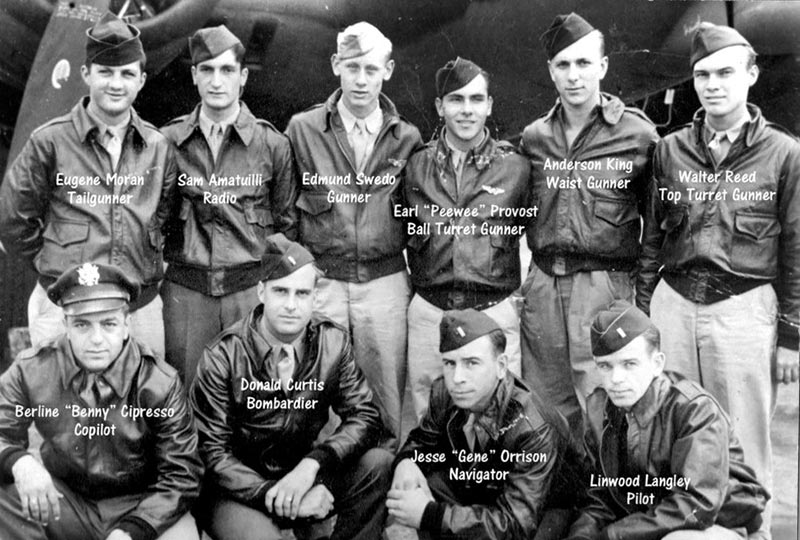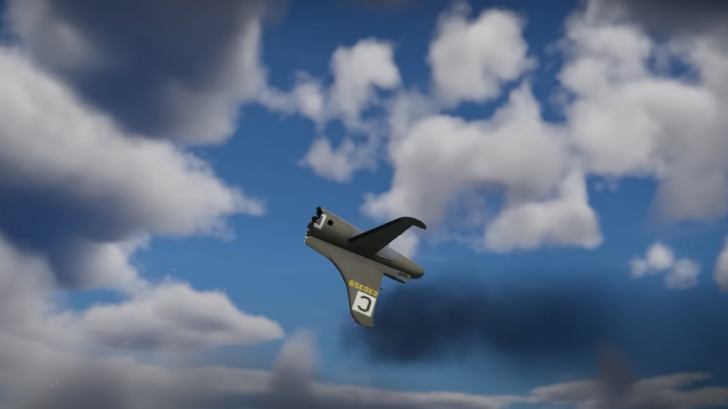The year is 1943. America’s bombing campaign in Germany is now the top priority of the Eight Air Force. Every day, strategic targets are brought down throughout Western Europe. And the aircraft leading the charge is the B-17 Flying Fortress, America’s trusty and durable heavy bomber.

No Fighter Escorts
In 1943, however, fighter escorts were not established as the irrefutable strategy over Europe – nor did the Mustangs enter service just yet. They were instead escorted by P-47 Thunderbolts, who had to turn back before they were over their targets, leaving the Flying Fortresses to fight against German fighters. Despite these circumstances, the brave American pilots pushed through in hopes of making a difference. One of these brave men was Eugene Moran.

19-Year-Old Gunner
After enlisting in the US Army Air Corps in October 1942, Moran arrived at Snetterton Heath, England, in October of the next year. The young gunner, who was 19 at the time, started his combat tour with the 96th Bomber Group aboard B-17 “Rikki Tikki Tavi”.
On November 29, 1943, just a month after he arrived in England, Moran and his Flying Fortress crew were shot down over Bremen, Germany. The B-17’s tail section suffered severe damage, resulting in its separation from the aircraft. Moran, who was the crew’s designated tail gunner, suddenly found himself falling from 20,000 ft. The only parachute he had was ridden with bullet holes and was unusable.
Divine Intervention
He was falling at such a fast rate that the gold fillings in his teeth began to pop out one by one. While this was happening, Moran said to himself:
“I’m going to die, so why fight it?”
Luckily for Moran, the tail hit a tree that cushioned the fall, saving it from being completely crushed upon impact.
Moran had broken ribs, broken forearms, and a crushed skull due to his harsh landing. Regardless, he was taken to a POW camp with two POW Serbian doctors who performed surgery to repair his injuries.

Not Done Just Yet
Moran’s horrific story would continue afterward, however. For more than a year and a half, Moran was sent to various POW camps all over Europe. The 19-year-old gunner was once aboard a “Hell Ship” with a thousand more prisoners for three days without food, water, or toilets on the Baltic Sea in 1944. Moran also survived a 600-mile Black March in 1945. He would finally be liberated at Bitterfeld, Germany, on April 26, 1945.
For his sacrifices during service, Moran was awarded two Purple Hearts, an Air Medal with Gold Leaf Cluster, a European Theater Award, and the Good Conduct Medal.

Dedicated As Always
After the war, Eugene Moran married Margret Finley, who he raised nine children with, and became a rural mail carrier for more than three decades. He also served as chief of the Soldiers Grove Volunteer Fire Department, a charter member of the Soldiers Grove Rescue Squad, and a fire warden for 30 years.
The people of Soldiers Grove were more than happy enough to dedicate a street to Eugen Moran for his unrelenting community service, naming it – Eugene P. Moran Park Drive – for the veteran.



